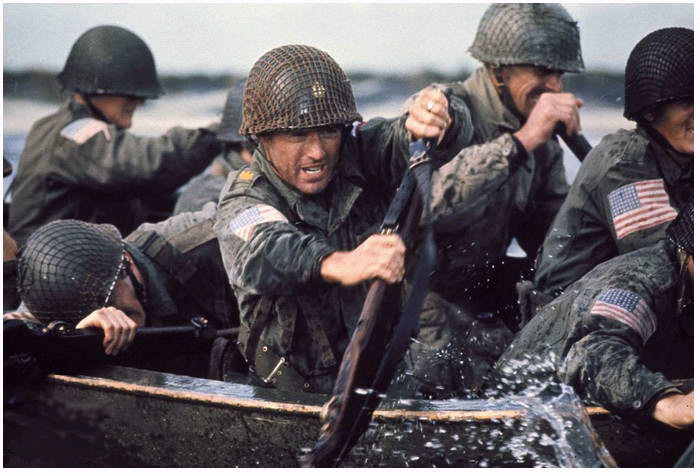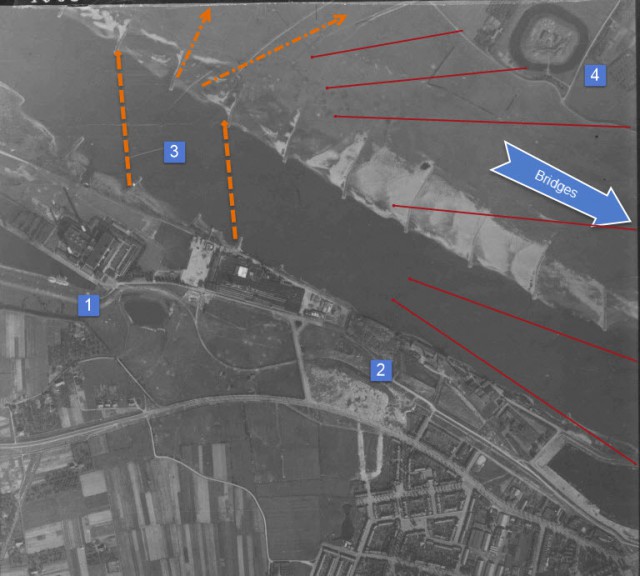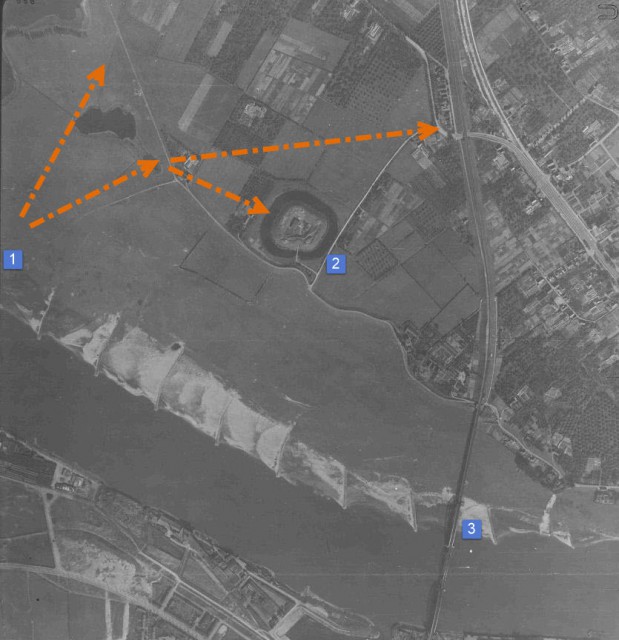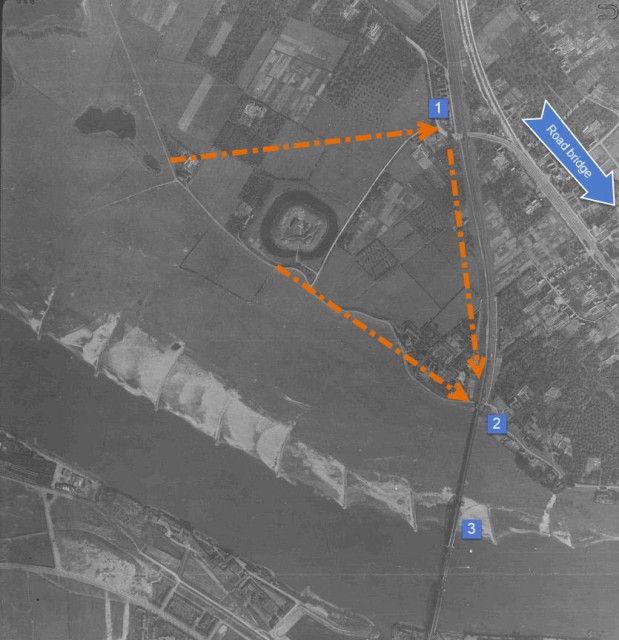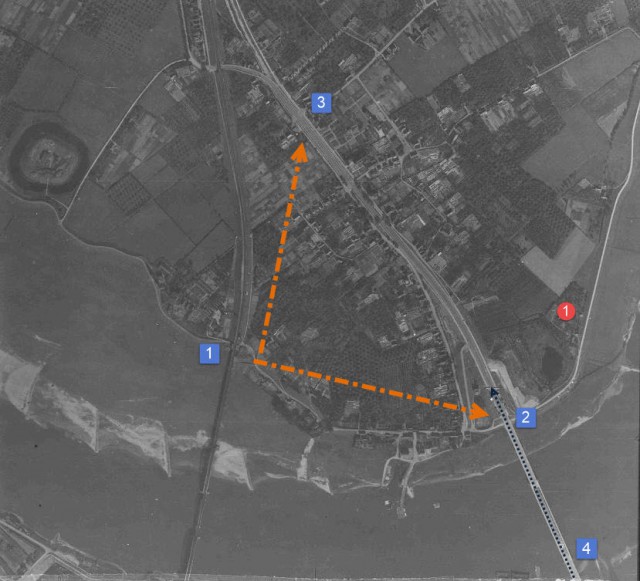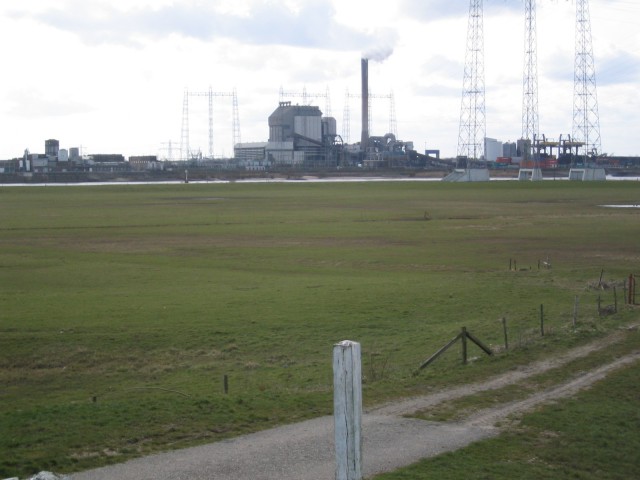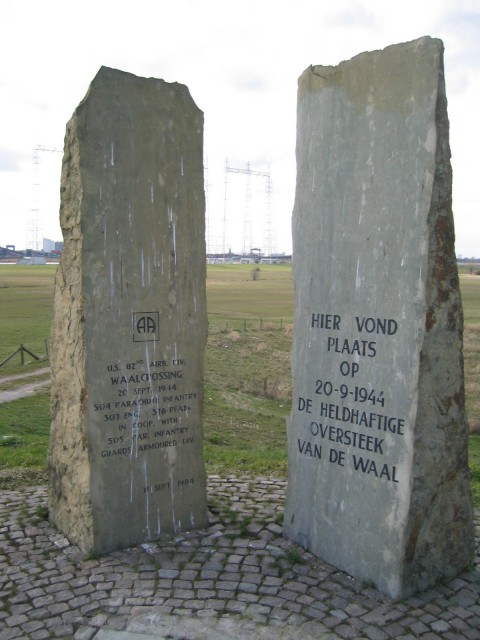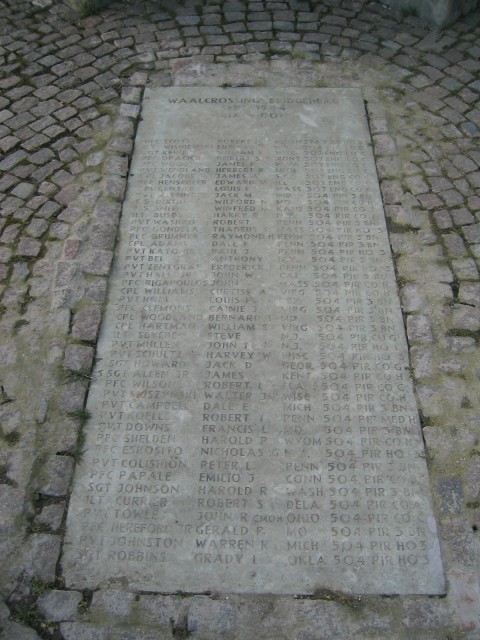This official After Action Reports start in the morning of September 20th, 1944, the 3rd day of Operation Market Garden and the bridges across the Waal River at Nijmegen are still in German hands. By now news had filtered through that the British at Arnhem were in dire straights and must be reached that day, or the operation will surely fail.
General Gavin, the Commanding General of the 82nd Airborne Division, has been pushing for an assault river crossing by his men since XXXCorps arrived in Nijmegen the day before. An attempt on the Waal River bridges is made early that day and later, after the first attempt has failed, the decision is made to execute the assault crossing at 08:00h on September 20th.
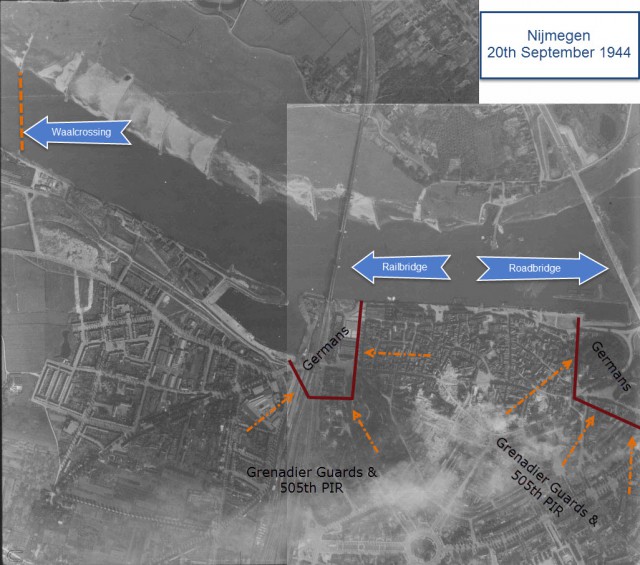
Unfortunately, the boats that need to carry the men of H- and I-Company of the 504th Parachute Infantry Battalion are not yet in the Nijmegen area. They are brought up from the starting line in Belgium as quickly as they can but are held up along the way by the first interruption on Hells Highway. The boats do not arrive until 14:30h (or even later depending on the source) causing the operation to be postponed a number of times.
While reading the After Action report, please bear in mind that this is written about H-Company, I-Company was in the first wave too and suffered massive casualties but barely gets a mention in the report. The Report was written in 1947 by Captain Carl W. Kappel, the H-Company commander who took part in the Waal River crossing.
H-Company After Action Report: D+3
At 0900 hours, the Third Battalion received a warning order that they would make an assault crossing of the River Waal that afternoon to secure the Nijmegen Highway Bridge. The Battalion Commander, Battalion S-3 and the Company Commanders immediately went forward on reconnaissance. The crossing was to be launched between two large buildings on the south bank of the river. These buildings, the power plant of the area, were located outside the western limits of the city of Nijmegen. Reconnaissance was limited somewhat as snipers still occupied the area. Machine guns from the town and opposite banks of the river kept the roof clear. From a position inside the building, one man at a time could get a good view of the area to be attacked.
The map study and visual reconnaissance brought out the flat low area. All roads and the railroad were on top of dikes. These dikes cut the area into compartments. The ground in between was flat and level. With the exception of narrow deep drainage ditches, in regular straight lines, there could be no cover. Grazing fire was limited only by the maximum of the weapons fired.
The entire area was dominated by ancient Fort Hof Van Holland some 800 yards north of the river and 800 yards west of the railway embankment. The entire fort was surrounded by a moat some 75 feet wide.
Between the river and Fort lay a dike topped with a hard surface road parallel to the stream, denying observation and flat trajectory fire into the area immediately behind the dike. Extending from the highway bridge west to the railroad bridge, the dike was low, rapidly increasing in height as it continued westward to the Fort.
Extending westward from the Fort to the river ran an irregular line of trenches and emplacements, varying from 600 to 1000 yards from the river over very flat ground.
The river presented a formidable obstacle some 1200 feet in width, with a strong westward current estimated at eight miles an hour.
During our reconnaissance, Troop Carrier Command delivered supplies to forces at Arnhem. A veritable wall of small arms and flak greeted them from the area north of the Waal, all the way to Arnhem, indicating the German forces in our attack area were present in strength.
It was possible for our troops, now moving up under battalion control, to move into covered positions along the rear of the dike the buildings were on. Tanks of the 2d Irish Guards would support the crossings by fire from positions on the dike. The Second Battalion, 504 Parachute Infantry, would support the crossings by fire from positions along the dike. (Map E) First Battalion, 504 Parachute, would follow the Third Battalion. The 376 Parachute Field Artillery was in direct support, to be supplemented with all available British Artillery arriving constantly. All artillery was to fire a ten minute concentration on the target area. Dive bombers and rocket firing typhoons were to bomb and strafe from 1445 to 1455. The area to be smoked at 1455 by artillery and mortars. (75mm howitzer and 81 mm mortar, not as satisfactory as desired.) Tanks were to fill in blanks of the smoke to the limit of their capacity. H-Hour was set at 1500 hours. (49)
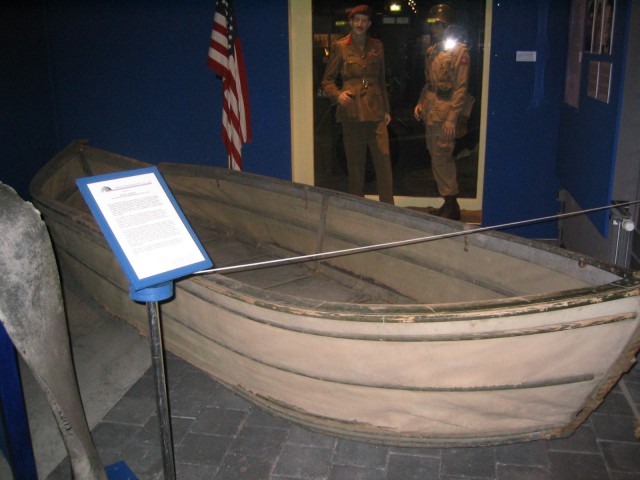
Twenty-six collapsible boats were on the way forward from the 43d British Division. All boats were to be used in each wave, the first wave to consist of H and I Companies and the Third Battalion Command Group. The balance of the Third Battalion in the second wave.Succeeding waves to transport the First Battalion.
The Battalion plan of attack was to carry the trenches, by pass the Fort on the north side, move directly to Arnhem-Nijmegen highway and attack south down the highway. G Company, in the second wave, was to go into position astride the highway, block any movement on the highway, and protect the rear of the battalion. H and I Companies, in the first wave, were to attack south along the highway, I on the left (east), H on the right (west), and seize the northern end of the highway bridge.
The forward observer from the 376 Parachute Field Artillery Battalion was attached to H Company with priorities of fire to H Company. The 81 Mortar Observer was attached to I Company with priorities to I Company.
Company C, 307 Airborne Engineers would furnish three men to man each assault boat.
Third Battalion arrived at the dike about 1400 hours, was divided into group of thirteen men (capacity of boats 16 men) and placed along the dike in order of the crossing.
The boats arrived at 1430 and were hastily assembled. They were collapsible canvas boats, steered by large wooden tiller, with 8 paddles, similar to canoe paddles, for power. They would carry only ten men in addition to the crew of three engineers, making necessary a quick revision in loading plane. The aerial phase of the attack was under way by this time. The company attack order had been issued and all men were aware of their assignments. H Company was to clean out the trenches in their area, all three platoons and Company Headquarters abreast, continue the advance to the cover of the first dike, recognize, and attack due east north of the fort to the Arnhem-Nijmegen highway. Second and Third Platoons abreast, 3d platoon on the right, first platoon following the third, the second platoon was to keep visual contact with I Company on the left. Wire communication was to be left behind the rear CP. Each man was to carry the basic combat load, dropping one bandoleer, immediately upon crossing the river. The SOP was varied so that all equipment and ammunition was to be suspended from pistol belts and suspenders with belts left open, in order that all equipment could be removed swiftly. No life belts or mae wests were available.
A rear command post was set up at the dike under the First Sergeant, leaving a supply group, and lightly injured man whose conditions had been aggravated by the marches and countermarches of the past twenty-four hours. They were, by using carts, to bring resupply of small arms and the wire communications across the river whenever possible.
Crossing the Waal River
1. The power plant, the starting point of the Waal crossing
2. Irish Guards and 1st and 2nd Battalion 504th PIR in fire support
3. River crossing, due to the current they all drifted west
4. Fort Hof van Holland, a German stroingpoint
The red lines depict German fire, this came from 3 sides as part of the Southern bank was still in German hands.
The smoke cover was laid down at 1455 hours, but it was readily apparent that it would be insufficient, as had been feared. The first wave picked up boats and started across the dike at 1457 hours, and immediately came under the small arms fire from both sides of the river and the railroad bridge. The wave was halted monetarily by a high wire fence placed by the power company parallel with the river. The H Company commander cut one of the steel posts with a gammon grenade, and pressure of the men dropped two sections of the fence. All the boats of the first wave funneled through the gap thus created. The organization was mixed up somewhat in this funneling process.
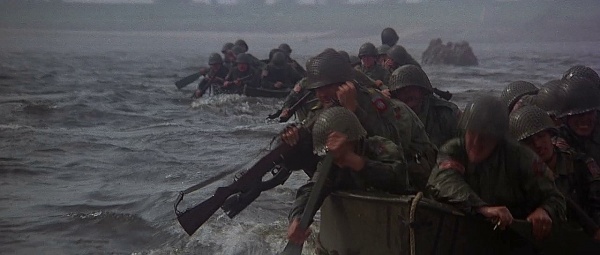
The Company Commander attached himself to the first boat, but as it was placed in the water it immediately sank. The current was swift enough to knock down those men in water over their waist, and they had to swim back to shore. The Company Commander discarded all equipment and assisted a non-swimmer back to the southern edge. He was so weekend by the struggle with the current that he could not pull the soldiers completely out of the water, and left him half in and half out of the stream. (This incident is mentioned by contrast to a news dispatch that stated some men stripped to one bandoleer and their rifles and across the stream to participate in the fight.) The company Commander then joined the third boat to be launched. This boat lost two engineers prior to launching; immediately after launching, the third engineer at the steering tiller was knocked out of the boat. His place was taken immediately by the Platoon Sergeant, who quickly had the boat back on course.One by one the men wielding the paddles slumped forward, until about twenty yards from the north bank there were only two paddles operating.
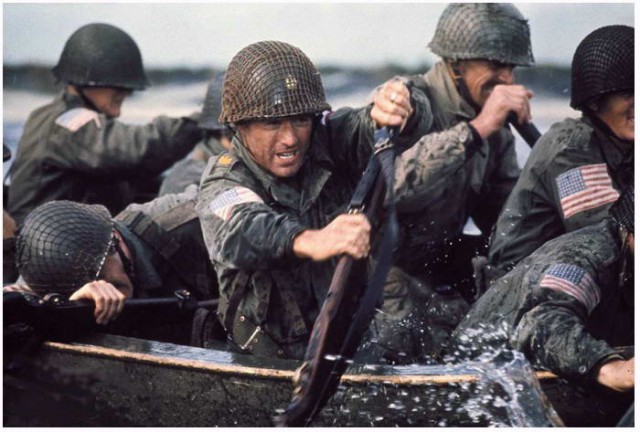
The Company Commander leaped into the water with the bow rope and pulled the sinking boat ashore. The boat was beached along a pile of rocks some two hundred yards west of the intended landing area. The three dead and five wounded were placed in what cover the rock afforded. Surviving was the Company Commander, the Platoon Sergeant, and the Company Medic. The flat ground was being swept by fire. The Company Commander picked up a Thompson sub with a bag of clips and the three left on a run for the trenches. An average of one man was killed in each boat, although boats 4 and 5 of H Company escaped with none wounded or killed.
Of the twenty-six boats thirteen were lost in delivering the first wave. Of these, eight succeeded in returning to the south bank. Time was lost in the delivery of the second wave because the boats landed downstream and had to be manhandled to the launching sites. These eight boats were rapidly reduced to one, but the engineers, with complete disregard of their own losses, continued their trips until the mission was accomplished.
Attack on Fort Hof van Holland
1. Location where the boats reached the North bank
2. Fort Hof van Holland
3. Railbridge in German hands
H Company continued through the trenches on the run, finding them generally deserted except for a few Germans who were killed, most of whom were huddled in dugouts seeking protection from the heavy fire from the south bank. The company continued, almost without pause, to the dike, Reorganization was hasty, as small arms fire was coming from the south bank. Some of this may have been from the friendly forces covering the advantage. The platoons were of about equal strength, with some attachments of about sixteen men each. The weapons section had one 60 mm. mortar and eight rounds of ammunition. The Command group consisted of the Company Commander, Communication Sergeant, with 300 radio, three messengers, the Forward Observer, whose assistant and radio were lost on the crossing, and about five men of the mortar section. This group picked up several stragglers and fought as platoon in addition to other duties. The Second and the Third Platoons were crossed the diked road abreast in the first wave and continued toward the railway embankment, through the orchards, and along the ditches.
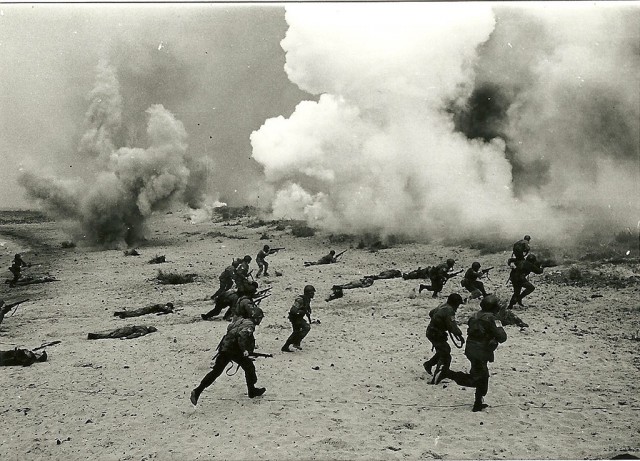
They were followed closely by the Command group. A German machine gun squad, displaced from the dike, opened on these platoons from the rear just as the Command group came over the dike directly on top of them. Six Germans were killed in stride with no losses to the Command Group. Machines guns were mounted by the Germans in the protection of the North and south ditches, but in almost every one they neglected to cover the east and west ditches or occupied them too far forward. BAR and TSMG assault fire in these ditches rendered them untenable. Advancing swiftly up these ditches the attackers could then render -flanking fire on the occupants of the north-south ditches, who hastily withdrew to the next line. Some 20 to 30 remained in position and were killed. With the Second and Third Platoons about halfway to the railway embankment, heavy 20 mm. fire was received from Fort Hof Van Holland. The fort had not been damaged by the aerial bombardment and two sets of dual 20mm. guns at rear of the fort, protected from the tank fire on the south bank, were firing into the rear of the company.
The First Platoon could not, from their positions, bring effective on the guns, and it was necessary to commit the group under the Company Commander. The 60 mortar ammunition was fired here and the gun abandoned. The crew kept the Germans from the 20 mm. guns while one-half the force swam the moat, climbed the sides of the Fort and cleaned out the chambers directly under the gun, destroying sum eight to ten enemy. They then continued in the rear of the Second and Third Platoons. As this group neared the same positions where the assault echelons had received fire from the Fort, they too were brought under 20 mm. fire.
A messenger was dispatched to the Platoon Leader, First Platoon, to clean out the Fort and disable the guns. This was quickly accomplished with one causality, the Platoon Sergeant, who continued with his unit for the remainder of the day. Twelve to fourteen enemy were accounted for this time. The First Platoon lost contact with the Company at this point, and the Company Commander did not regain control of this Platoon until late in the evening. The Fort remain a definite problem all afternoon, as it consisted of many layers, until it was completely cleared by the First Battalion latter in the day and occupied as the Regimental Command post. Some thirty prisoners were taken by the First Battalion, plus inflicting numerous casualties to the enemy, before the Fort was written off as captured.
The Railroad Bridge
1. Railway embankment, 88 mm AT gun
2. Concrete fort in abutments
3. Railroad bridge
The Second and Third Platoons reached the railway embankment at about 1600 hours. All efforts to cross the embankment were repulsed by heavy fire. Grenades were exchanged over the dike. Many machine guns, including 20 mm., fired grazing fire along the top of the railway embankment. Men were dispatched south along the embankment in an effort to penetrate through culverts or to find an underpass. An unfortunate incident occurred because a group of civilians occupied a concrete shelter under the railway embankment. The attacking force, seeking an entrance through the embankment, found the shelter, believing it to be a passage way and hearing voices, tossed in gammon grenade sand assaulted the position, severely wounding two young women among others. The chamber did not have an exit on the east side.
In the assault of the embankment, one 88 mm. anti-tank gun and one smaller caliber AT gun, mounted on top of the embankment covering the railway bridge, were neutralized. The guns, dug in, were not physically in our possession, but could not be reached by the Germans as long as we remained within a few feet of them.
The Company Commander then directed that the attack be shifted south along the railway embankment to seize the northern end of the railroad bridge, pass under the railroad bridge, and attack the highway bridge from the west, with the right flank secured by the dike parallel to the Waal. This, if successful, would give us one bridge across the stream. The Second and Third Platoons pressed this attack with vigor and quickly overran the exterior positions. Here the Second Platoon was joined by a force of about ten men under the Company Commander of I Company. These two forces immediately attacked toward the highway bridge.
At about this time the Company Commander of H Company was joined by the Third Battalion Commander and his S-3. They were alone, having lost their command group in the crossing, and without communication were having a difficult time trying to regain control. We were the first elements they have contacted. A few minutes later this group was augmented by a force of about eighteen from various companies, organized as a Platoon under the Assistant Platoon Leader, First Platoon, H Company. The entire force moved immediately to the railway bridge.
A concrete and steel fort had been constructed within the abutments of the railroad bridge. With one group of six men keeping the embrasures under fire, the remainder of the THIRD Platoon, consisting of eight men, entered the abutment, found the passageways in the dark and emerged into the fort. The squad leader, leading the assault (only one man could go up the narrow winding steps at a time), was severely wounded, but he killed and wounded several Germans. The remainder of twelve to fourteen surrendered. These were the first prisoners H Company had taken all day.
The H Company Commander had been trying to contact the Regimental Commander, advising him that the railroad bridge was in our hands and requesting tanks to cross the railway bridge. The Battalion Commander approved these recommendations and, with the attachment of H Company’s radio and operator, attempted to get in touch with Regiment and elements of the other companies.
H Company Commander affected a quick reorganization of the First and Third Platoons, equalized their strength and dispatched the Third toward the highway Bridge. Most of the First Platoon was placed to protect the railroad bridge, with one group dispatched back to the crossing site in an attempt to get ammunition. The supply was now very critical. A three man patrol was dispatched north along the west side of the embankment to contact the First Platoon Leader and his group, have them move to the railroad bridge and contact any friendly forces in the area.
At about 1630 hours, immediately after the occupation of the bridge, a message from the Regimental Commander, via radio, stated that tanks would act on the railroad bridge.
The southern edge of the bridge was not yet in our hands, but increasing pressure from the units on the south bank was causing many Germans to try to withdraw across the bridge.
These units made several counterattacks across the bridge, which were easily dealt with. One did succeed in reaching within hand grenade distance of the fort, but was promptly killed. Many Germans, now hopelessly cut off, attempted to escape by jumping from the bridge. The men were shooting them in the air until stopped by the Company Commander due to the shortage of the ammunition. Two German machine guns were mounted to sweep the long axis of the bridge, and the German situation was now hopeless. One of the German prisoners, who could understand English, was ordered out on the bridge to tell the Germans to cross to the south side and surrender. He was shot by the Germans pinned on the bridge. They were again swept by machine gun fire, and many leaped from the bridge even though they were not over the river. None surrender at this time.
The Company Commander, H Company, remained at the railway bridge with the Battalion Commander until about 1830 hours, with approximately one-fourth of his known force, to attach to the tanks when they crossed the railroad bridge. At about this time tanks were heard on the northern side and were soon identified as British. They had crossed the highway bridge and were working over the area north of the highway bridge. Elements of the First Battalion, 504 Parachutes Infantry, began together at the railroad bridge. The defense of the bridge was turned over to them and the remnants of Company H moved out quickly in the wake of the Second and Third Platoons, who had been attacking the highway bridge. The platoons had met considerable resistance from Germans occupying houses along the road. The houses were set on fire and the enemy killed as they fled. Several were effectively blasted with a captured German Panzer Faust. Progress was slow but very steady.
The Road Bridge
1. New CP of H Company
2. Attack on Road Bridge
3. Outpost on the road
4. Grenadier Guards cross the bridge
Red 1: Location of bunker where Harmel tried to blow the bridge (not in the text)
At about 1938 hours, the Second Platoon, H Company, and the group under Company Commander of I Company reached the highway bridge. They were joined within a few minutes by the Third Platoon of H Company and the Command Group. The Second Platoon Leader and the Squad Leader of I Company cut all wires leading to the bridge. I Company established a Command Post in the abutments and dispatched their men to the east. The First Platoon of H Company pushed to the north about four hundred yards and occupied positions astride the road. The Third Platoon occupied the west side of the bridge. The Second Platoon of H Company crossed the highway bridge to the south side. There were many Germans in the girders of the bridge, firing into the area, and many more Germans in the immediate vicinity of the bridge, all disorganized but quite capable of serious trouble, if they realized it.
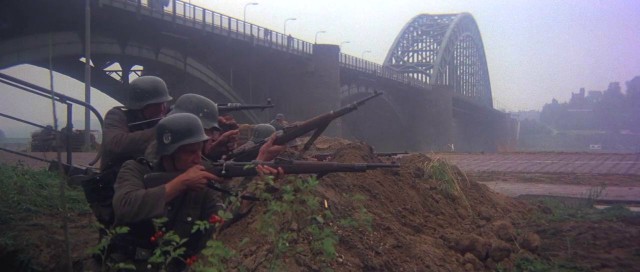
The situation of the group at the highway bridge was critical. Although they were in possession of the objective, many of the men were without ammunition. Nearly all were down to the last clip. Messengers were dispatched to the Battalion Commander informing him the bridge was in our hands and requesting ammunition. The 300 radio, now with the Battalion Commander, was the only link with the south side. The Second Platoon Leader had expected to contact friendly troops on the south side of the bridge, but the Infantry had not arrived as yet. The Battalion Commander and S-3 arrived at the highway bridge. They had been promised ammunition to be delivered across the highway bridge. The mortar section of H Company was rounding up prisoners in the vicinity of the bridges and had about one hundred gathered underneath the railroad bridge. They were being collected and guarded by men whose total amount of ammunition was approximately twenty-five rounds.
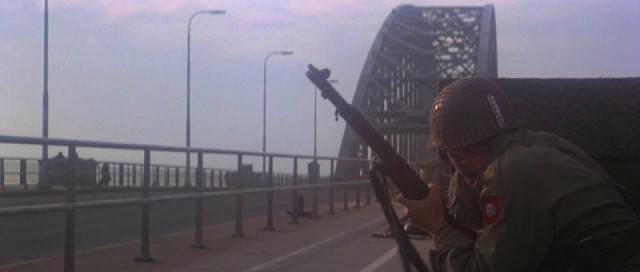
Prior to contact being made with friendly units, the tractor trailer captured by H Company on D plus one, driven by the Third Battalion Supply Officer and escorted by the Regimental Munitions Officer, roared across the bridge, loaded with ammunition. With all men busy and under some fire, it was speedily unloaded by a high ranking detail consisting of the above two men, the Battalion Commander, Battalion S-3, and the Company Commanders of H and I Companies. The truck returned to our area safely. With the resupply of ammunition the Second Platoon of H Company recrossed the bridge, capturing fourteen Germans in the girders, and killing several more. This time they contacted elements of the 505 Parachute Infantry. Patrols were sent out with instructions to have the Third Battalion assemble on the highway bridge and reorganize.A platoon from First Battalion, of about twenty-five men, reported in to the bridge and were immediately attached to H Company to strengthen the defense of the bridge.
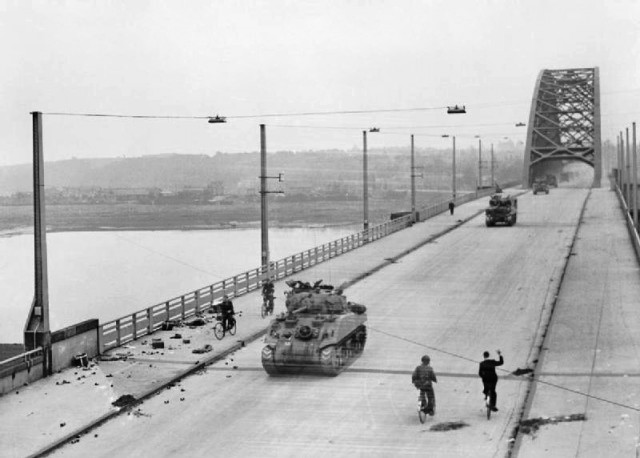
With the situation now fairly well in hand the Battalion Commander left to report personally to the Regimental Command Post, now located in Fort Hof Van Holland. The reorganization of the Third battalion was completed under control of the Company Commander, Company H. The Battalion Commander returned at about 2300 hours with orders to continue the attack toward Arnhem.
All this time the highway bridge was strangely quiet. The enemy, disorganized and in great confusion, suffering heavy losses, should not be allowed to rest and reorganize. Prior to the physical occupation of the northern end of the bridge, eight light tanks had crossed. Two of these were destroyed just north of the bridge. No others crossed on the 20th.
Losses
Within the Third battalion, G Company losses were light, with approximately ninety-five officers and men present for duty. H and I Companies, who had borne the brunt of the losses in the river crossing and carried the lions share of the fighting, were about forty-five officers and men each. With H and I Companies equal in strength, a toss of the coin decided that G and I Companies would continue the attack at 0430, with H in reserve. This attack is not included in the subject of this monograph.
The exact extent of enemy losses will probably never be known. Many prisoners were turned over to the first British troops to be contacted, in order to get rid of them. H Company turned over one group of twenty-six, and another of about ninety. One hundred and sixty-four were passed through U.S. Channels credited to the Third Battalion. Two hundred and sixty dead were counted on the railroad bridge alone, eighty dead on and in the vicinity of the highway bridge. (These are unofficial estimates.)
As of midnight, 20 September 1944, all objectives of the 826 Airborne Divisions had been accomplished. The Division, however, remained in line, holding their gains and increasing them until 12 November 1944.
– The after action report ends here,
The 48 man killed
The Dutch newspaper De Gelderlander has written a book on the 48 Americans killed in the Waalcrossing. Part of the information is available in online, even though the text is in Dutch it is well worth visiting the site as it shows pictures of every man killed and the state it came from:
De Gelderlander website with Google Translate to English
De Gelderlander website in Dutch
Monument & Now
The monument commemorating Waal Crossing and the 45 men killed during the assault, these pictures were taken a couple of years ago before a new bridge (called: “The Crossing”).
Today, the area been changed completely but on the pictures below it’s mostly as it was in 1944.
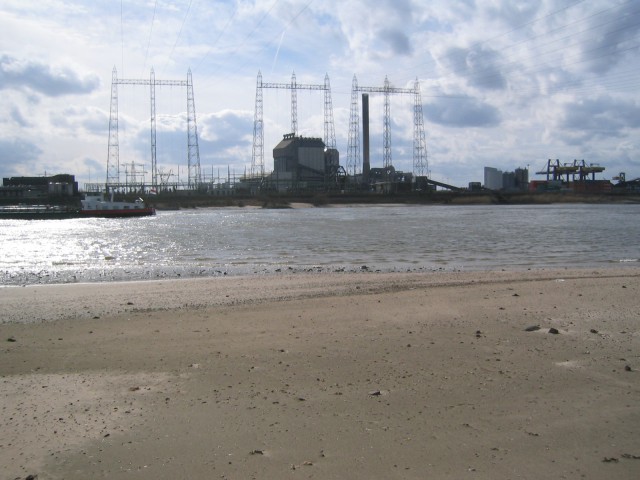
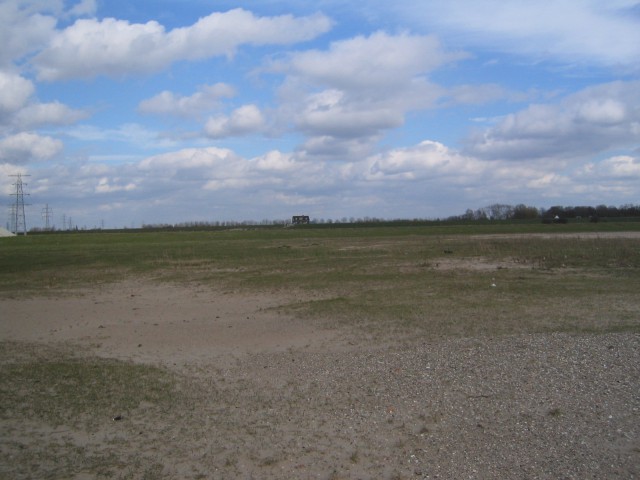
Looking towards the Dike from the waters edge, the open ground that had to be crossed to get to the Germans is massive.
Looking at the crossing site from the dike, again a good overview of the open ground.
The names of all that were killed in the crossing
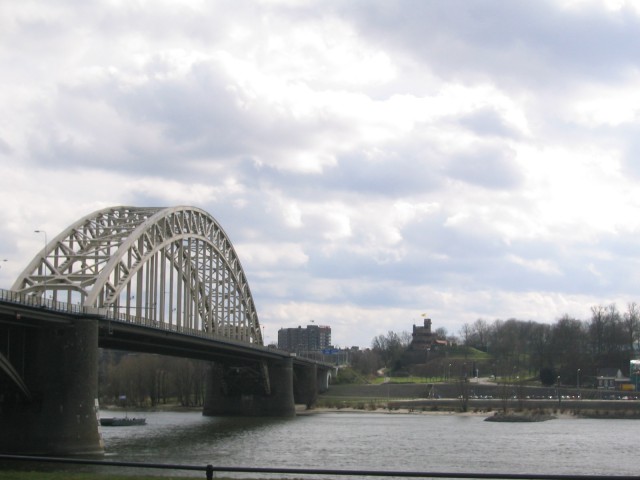
The Nijmegen Bridge, looking North
Pictures, introduction, and additions to the After Action Report by Joris Nieuwint.
